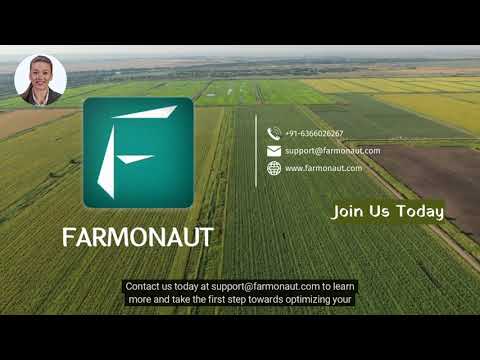Unveiling Eloise: Westland’s Forgotten Cemetery and the Fight to Honor Michigan’s Lost Souls
“Eloise Cemetery in Westland, Michigan, contains approximately 7,100 unclaimed graves, representing a significant historical and genealogical resource.”
In the heart of Westland, Michigan, just a stone’s throw from the bustling streets of Detroit, lies a forgotten piece of history that speaks volumes about our society’s past treatment of the mentally ill and impoverished. Eloise Cemetery, a neglected burial ground housing roughly 7,100 unclaimed graves, stands as a somber reminder of those who lived and died on the fringes of society. As we delve into the complex history of this site, we uncover a story of neglect, rediscovery, and the ongoing fight to preserve the dignity of those interred within its bounds.
The Forgotten Resting Place: A Brief History
Eloise Cemetery, once part of a sprawling asylum complex, has become a focal point for genealogy research and preservation efforts in recent years. The cemetery’s origins date back to the early 19th century when the Eloise medical complex was established. This facility, operational from 1839 to 1982, encompassed a poorhouse, asylum, and hospital, serving as a catchall for society’s most vulnerable members.
Over the decades, the Eloise complex grew to become almost an independent community, with its own farm, post office, and fire department. At its peak, it housed up to 10,000 patients at a time. However, as the facility expanded, the cemetery that served it fell into obscurity.
[Image 1]
The Burial Process: Impersonal and Overlooked
The process surrounding burial at Eloise Cemetery was often simple and impersonal. If a deceased patient went unclaimed by family or friends, they were buried at public expense. This led to many being interred with only a number marking their location, a stark testament to the anonymity forced upon them even in death.
The makeshift memorials that do exist consist of concrete blocks, inscribed only with numbers—often the only remaining record of the deceased. Most documentation, such as death ledgers and names, has been lost or destroyed over the years, further obscuring the identities of those buried here.
A Cemetery Hidden in Plain Sight
Today, Eloise Cemetery stands largely unnoticed and neglected. Located across from a public housing complex, it is enveloped by a locked gate bearing a “no trespassing” sign. The lack of proper signage or paths makes it challenging for visitors to navigate or pay their respects.
Many of the grave markers are buried, with only a few headstones visible above the ground. This has left descendants and genealogists struggling to identify their loved ones. The overgrown grass and lack of maintenance have further contributed to the cemetery’s forgotten status.
Renewed Interest and the Struggle for Preservation
In recent years, interest in Eloise Cemetery has surged, driven in part by the nearby Eloise Asylum haunted attraction. This newfound attention has brought both opportunities and challenges for those seeking to honor the cemetery’s residents.
The Westland Historical Commission now receives weekly inquiries from individuals searching for information about their relatives buried at Eloise. However, the absence of identifiable markers complicates these searches, often leaving families with more questions than answers.
Volunteers: The Unsung Heroes of Preservation
Numerous volunteers and genealogy enthusiasts have taken up the mantle of restoring and maintaining Eloise Cemetery. Their efforts are often fueled by a deep-seated desire to honor the deceased and reconnect families with their histories. However, these well-intentioned individuals face significant hurdles in their quest.
- Lack of resources and funding
- Conflicts with Wayne County officials over liability concerns
- Sporadic access to the grounds
- Challenges in uncovering and preserving existing markers
Despite these obstacles, volunteers like Felicia Sills have worked tirelessly to clean up the grounds and uncover markers. Their dedication speaks to the profound impact this forgotten cemetery has on those who discover its story.
“The forgotten Eloise Cemetery, once part of a large asylum complex, has become a focal point for preservation efforts near Detroit.”
The Human Cost of Neglect
As we explore the history of Eloise Cemetery, it’s crucial to remember that each numbered grave represents a human life—a person with hopes, dreams, and a story that deserves to be told. The neglect of this burial ground reflects a broader societal issue: the treatment of the mentally ill and impoverished, both in life and in death.
Personal stories have emerged from individuals searching for lost relatives, like Travis Hobbs, who sought his great-grandmother. These accounts underscore the human struggle for remembrance in the face of institutional neglect and the passage of time.
[Image 2]
Challenges in Record-Keeping and Identification
One of the most significant obstacles facing those interested in Eloise Cemetery is the lack of comprehensive records. Over the years, crucial documents have been lost, destroyed, or simply never created, leaving massive gaps in our understanding of who lies buried within the cemetery’s bounds.
Scholars and genealogists have made strides in compiling data on the individuals interred at Eloise. Some have managed to create correspondence between numbers and names, painstakingly piecing together fragments of information from various sources. However, this work is far from complete, and many graves remain unidentified.
The Role of Technology in Preservation
In the digital age, technology has become a crucial ally in the fight to preserve Eloise Cemetery’s history. Online databases, mapping tools, and genealogy websites have allowed researchers to compile and share information more efficiently than ever before.
At Farmonaut, we understand the importance of leveraging technology for preservation efforts. While our focus is on agricultural solutions, the principles of data management and satellite imaging that we employ could potentially be adapted to aid in cemetery preservation projects. Our API and mapping technologies demonstrate the power of digital tools in managing and analyzing spatial data, which could be invaluable for projects like mapping and documenting historical sites.
Legal and Ethical Considerations
The preservation of Eloise Cemetery raises complex legal and ethical questions. Who is responsible for the upkeep of such a site? How can we balance the need for public access with the necessity of protecting the grounds from vandalism or further degradation?
These questions have no easy answers, but they are crucial to address as we move forward with preservation efforts. The ongoing debates about the cemetery’s future highlight the need for clear guidelines and policies regarding the treatment of historical burial grounds.
The Future of Eloise Cemetery
As discussions continue about the cemetery’s future, there is hope for positive change. New ownership of the cemetery promises a shift in approach, with plans to allow visitors and commemorate the sites. However, whether this will lead to genuine changes in treatment and recognition for the buried remains to be seen.
The path forward will require collaboration between local authorities, historical societies, volunteers, and the community at large. It will also necessitate a commitment to funding and resources to ensure that preservation efforts are sustainable in the long term.
Historical Timeline of Eloise Cemetery
| Year | Event |
|---|---|
| 1839 | Establishment of Eloise medical complex |
| Late 1800s | Estimated establishment of Eloise Cemetery |
| 1930s | Peak usage period of Eloise complex |
| 1982 | Closure of Eloise asylum complex |
| 1990s-2000s | Period of neglect and obscurity for the cemetery |
| 2010s | Renewed interest and beginning of preservation efforts |
| 2020s | Ongoing debates and plans for future preservation |
The Broader Impact: Lessons from Eloise
The story of Eloise Cemetery serves as a powerful reminder of the importance of remembering and honoring all members of our society, regardless of their status or circumstances. It challenges us to confront uncomfortable truths about our past treatment of the mentally ill and impoverished, and to consider how we can do better in the present and future.
As we work to preserve this piece of Michigan’s history, we’re not just saving a physical space—we’re reclaiming the stories and dignity of thousands of individuals who might otherwise be forgotten. This effort connects us to our shared humanity and reminds us of our responsibility to care for the most vulnerable among us, both in life and in death.
How You Can Help
For those inspired by the story of Eloise Cemetery and looking to make a difference, there are several ways to get involved:
- Support local historical societies and preservation groups
- Volunteer for cleanup and maintenance efforts when available
- Contribute to genealogical research and documentation projects
- Advocate for better policies regarding the preservation of historical cemeteries
- Share the story of Eloise Cemetery to raise awareness
By taking action, we can ensure that the legacy of those buried at Eloise Cemetery is not lost to time and neglect.
Conclusion: A Call to Remember
As we conclude our exploration of Eloise Cemetery, we’re left with a profound sense of the work that remains to be done. This forgotten burial ground stands as a testament to the lives of thousands of individuals who were often marginalized in life and forgotten in death. Yet, through the dedicated efforts of volunteers, researchers, and community members, their stories are slowly being brought back into the light.
The fight to honor Michigan’s lost souls at Eloise Cemetery is more than just a local issue—it’s a reflection of our society’s values and our commitment to preserving the dignity of all human beings. As we move forward, let us carry with us the lessons learned from this neglected piece of history, working together to ensure that no one is forgotten and that every life is honored with the respect it deserves.
In the end, the story of Eloise Cemetery reminds us that every grave marker, every numbered concrete block, represents a human life worthy of remembrance. It challenges us to look beyond the surface, to uncover the hidden histories in our own communities, and to take action to preserve the memory of those who came before us. As we do so, we not only honor the past but also build a more compassionate and inclusive future for all.
FAQ Section
Q: How can I find out if I have a relative buried at Eloise Cemetery?
A: Contact the Westland Historical Commission or local genealogical societies. They may have records or can guide you through the research process.
Q: Is it possible to visit Eloise Cemetery?
A: Currently, access is restricted. Check with local authorities for any scheduled open days or guided tours.
Q: How can I contribute to the preservation efforts at Eloise Cemetery?
A: Look for local volunteer groups or historical societies involved in cemetery preservation. You can also donate to organizations dedicated to maintaining historical cemeteries.
Q: Why were so many graves left unmarked at Eloise Cemetery?
A: Many of those buried were unclaimed patients from the asylum or individuals whose families couldn’t afford proper burials. The practice of using numbered markers was common for public burials at the time.
Q: Are there plans to identify the unmarked graves?
A: Ongoing efforts by researchers and volunteers aim to match cemetery records with grave numbers, but it’s a challenging process due to lost or incomplete records.
Earn With Farmonaut: Affiliate Program
Earn 20% recurring commission with Farmonaut’s affiliate program by sharing your promo code and helping farmers save 10%. Onboard 10 Elite farmers monthly to earn a minimum of $148,000 annually—start now and grow your income!
For more information on our agricultural technology solutions, visit our API Developer Docs.







